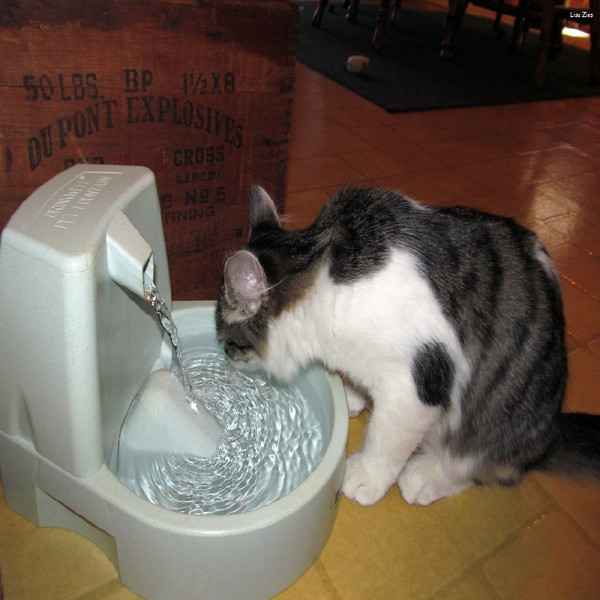Winter is a beautiful season, with its pristine snowscapes and the joy of cozying up indoors.
But as temperatures plummet, so does your home's comfort and energy efficiency.
That's where the art of window insulation comes in.
With the right techniques, you can keep the winter chill at bay, enjoy a snug living space, and even save on heating costs.
In this comprehensive guide, we'll explore the best ways to insulate your windows for winter, turning your home into a warm and inviting haven.
Types of Window Insulation
Before we dive into the nitty-gritty of insulating your windows for winter, it's crucial to understand the available options.
Let's take a closer look at the primary types of window insulation:
1
Weatherstripping
When it comes to sealing gaps and cracks around your windows*, weatherstripping is your trusty companion.
This method involves applying adhesive-backed strips to the window frames, creating an airtight seal when the window is closed.
It's an effective solution to prevent drafts and heat loss.
2
Window Insulation Film
For those seeking a transparent and cost-effective solution*, window insulation film should be on your radar.
This clear plastic sheet can be easily applied to the inside of your window frames.
Using a simple hairdryer, you can shrink the film to create a nearly invisible barrier that reduces heat loss.
3
Thermal Curtains and Drapes
Elevate both your style and insulation game* with thermal curtains or drapes.
These specially designed window coverings have insulating properties, trapping heat inside your room.
When drawn, they can significantly reduce heat transfer through your windows.
4
Window Insulation Kits
For a hassle-free DIY approach*, consider window insulation kits.
These kits typically include clear plastic shrink film and double-sided tape.
Follow the manufacturer's instructions to create an effective air barrier on your windows.
5
Draft Stoppers
Don't let chilly drafts sneak into your home draft stoppers are the solution.
These simple devices can be placed along the bottom of your windows to block cold air from entering.
You can purchase them or make your own from materials like old towels or foam.
Preparing Your Windows
Now that we've covered the different types of insulation, let's move on to preparing your windows for the insulation process.
It's a critical step to ensure your efforts yield the best results.
1
Window Inspection and Maintenance
Before you start insulating, take some time to inspect your windows thoroughly.
Look for gaps, cracks, or any signs of wear and tear in the window frames.
Even small openings can contribute to heat loss and drafts.
- Caulking and Sealing Cracks
If you find any gaps or cracks in the window frame or between the frame and the wall, use caulk to seal them. Caulk is a versatile sealing material that prevents air leaks and enhances insulation.
- Checking for Leaks and Drafts
On a windy day, run your hand around the window frame to feel for drafts. Alternatively, you can use a lit candle and observe if the flame flickers, which indicates air leakage. Identify these trouble spots for later insulation.
2
Measuring for Insulation Materials
Accurate measurements are crucial* to ensure your insulation materials fit correctly.
Measure the dimensions of each window you plan to insulate.
It's a simple step that prevents wastage and ensures a snug fit.
3
Gathering the Necessary Tools
Before you embark on your window insulation project*, gather the tools and materials you'll need.
Here's a basic list to get you started:
- Weatherstripping tape
- Window insulation film kit
- Thermal curtains or drapes
- Window insulation kits
- Draft stoppers or materials to make them
- Caulk and caulk gun
- Measuring tape
- Scissors
- Hairdryer (for window insulation film)
- Double-sided tape (if not included in your kit)
Now that we've prepped your windows and gathered your supplies, it's time to dive into the specific techniques for insulating your windows effectively.
DIY Window Insulation Techniques
1
Applying Weatherstripping
Weatherstripping is an excellent way to seal gaps and cracks around your windows, preventing cold air from infiltrating your cozy abode.
Here's how to apply weatherstripping like a pro:
- Clean the Surface: Start by cleaning the window frame thoroughly. Remove any dust, debris, or old weatherstripping adhesive residue.
- Measure and Cut: Carefully measure the length of the gaps or cracks you want to seal. Cut the weatherstripping tape to the appropriate size.
- Apply the Weatherstripping: Peel off the adhesive backing and press the weatherstripping tape firmly onto the window frame. Ensure it forms a tight seal when the window is closed.
- Test for Drafts: After applying weatherstripping, run your hand along the frame to check for any remaining drafts. Make adjustments if necessary.
2
Installing Window Insulation Film
Window insulation film is a cost-effective and efficient way to create an additional barrier against the cold.
Follow these steps for successful installation:
- Clean the Window: Before applying the film, clean the interior of the window thoroughly to remove dirt and dust.
- Measure and Cut the Film: Unroll the window insulation film and cut it to the size of your window, leaving a slight overlap on all sides.
- Apply Double-Sided Tape: Place double-sided tape around the window frame, where the film will adhere.
- Attach the Film: Carefully apply the film to the tape, starting at the top and working your way down. Use a hairdryer on low heat to shrink the film and remove wrinkles, creating a clear, tight seal.
- Trim Excess Film: After shrinking the film, trim any excess to ensure a neat appearance.
3
Making Your Own Draft Stoppers
Draft stoppers are a budget-friendly way to block cold air from creeping under your windows. Here's how to create your own:
- Gather Materials: Collect materials like old towels, fabric scraps, or foam pipe insulation.
- Measure and Cut: Measure the width of your windowsill and cut the chosen material to the appropriate length.
- Create a Tube: Roll the material into a tube, ensuring it's snug but not overly tight.
- Secure the Ends: Stitch or glue the ends of the tube closed to maintain the shape.
- Place the Draft Stopper: Lay the draft stopper along the bottom of the window, ensuring it covers the entire width.
These simple DIY draft stoppers are effective at blocking cold air and can add a touch of personality to your decor.
4
Using Bubble Wrap for Insulation
Bubble wrap isn't just for packaging; it can also serve as a low-cost insulating material for your windows. Here's how to use it effectively:
- Clean the Window: Start by cleaning the interior of the window to ensure good adhesion.
- Measure and Cut the Bubble Wrap: Measure the dimensions of your window and cut the bubble wrap to fit.
- Apply to the Window: Moisten the window with water, then press the bubble wrap onto the glass. The water helps it adhere securely.
- Trim Excess: Trim any excess bubble wrap for a neat appearance.
Bubble wrap creates a layer of insulation by trapping air in its bubbles, helping to reduce heat transfer and keep your home warmer.
Advanced Insulation Methods
Upgrading to Insulated Window Coverings
While DIY methods are effective, you may want to consider upgrading your window coverings for enhanced insulation.
Let's explore two popular options: thermal curtains and insulated blinds or shades.
Benefits of Thermal Curtains
Thermal curtains are designed with a thermal lining that provides additional insulation. Here's why they're worth considering:
- Enhanced Insulation: The thermal lining traps heat inside the room during the winter and keeps your home cooler in the summer.
- Energy Savings: By reducing heat loss through windows, thermal curtains can help lower your energy bills.
- Noise Reduction: They also offer noise reduction benefits, creating a quieter and more comfortable living space.
- Variety of Styles: You can find thermal curtains in various styles and colors to match your decor.
Installing Insulated Blinds or Shades
If you prefer a more streamlined look, insulated blinds or shades might be the right choice. Here's why they're a smart investment:
- Efficient Heat Retention: Insulated blinds and shades have special materials that prevent heat from escaping through your windows.
- Light Control: They offer excellent light control options, allowing you to adjust the amount of sunlight entering your home.
- Privacy: Insulated blinds and shades also provide privacy when closed.
Whether you opt for thermal curtains or insulated blinds, upgrading your window coverings can significantly improve your home's insulation.
Windows as a Long-Term Solution
If your home has older single-pane windows, you might want to consider installing storm windows.
These are an additional layer of windows installed on the outside or inside of your existing windows.
Here's why they're a valuable long-term investment:
- Enhanced Insulation: Storm windows provide an extra layer of insulation, reducing heat transfer and drafts.
- Improved Energy Efficiency: They can significantly improve the energy efficiency of older windows, helping you save on heating costs.
- Noise Reduction: In addition to insulation benefits, storm windows can reduce outside noise, creating a quieter indoor environment.
- Protection: They also offer protection for your existing windows against harsh weather conditions.
While the initial cost of installing storm windows may be higher than some other insulation methods, the long-term energy savings and comfort they provide make them a worthwhile choice.
Exterior Shading Devices for Winter
When it comes to keeping your home cozy during the winter, don't forget about exterior shading devices.
These additions can block the sun's heat in the summer and prevent heat loss in the winter.
Outdoor Blinds
Outdoor blinds are an effective solution for both sun and cold protection.
They can be installed on the exterior of your windows and adjusted to control the amount of sunlight entering your home.
Shades and Awnings
Shades and awnings are another option for exterior shading.
They provide shade in the summer and act as a barrier against cold winds in the winter.
By strategically placing them on the sunny side of your home, you can maximize their effectiveness.
These exterior shading devices not only enhance your insulation but also add to your home's curb appeal. Consider them as part of your overall winterizing strategy.
Professional Window Insulation Options
While many of the techniques discussed so far are DIY-friendly, there may be instances where professional assistance is necessary or preferred.
Let's explore when it's advisable to seek the help of experts and how to choose the right window insulation service.
When to Consider Professional Installation
Professional window insulation services can be invaluable in certain situations, including:
- Complex Window Designs: If you have unique or complex window designs that are challenging to insulate effectively on your own.
- Historic Homes: When preserving the historical integrity of your home is essential, professionals can provide custom solutions that meet preservation standards.
- Opting for High-Efficiency Windows: If you're considering upgrading to high-efficiency windows, professionals can guide you through the selection and installation process.
Choosing the Right Window Insulation Service
Selecting the right professionals for your window insulation project is crucial.
Here are some steps to ensure you make an informed decision:
Research: Look for reputable window insulation companies in your area. Read reviews, check their credentials, and ask for referrals if possible.
- Get Multiple Quotes: Obtain quotes from several companies to compare prices and services. Make sure the quotes include all necessary materials and labor costs.
- Ask Questions: Don't hesitate to ask questions about the insulation materials they use, the installation process, and the expected results.
- References: Request references from past customers to gauge the company's track record.
- Guarantees and Warranties: Inquire about any guarantees or warranties offered for their services.
Professional window insulation can be a significant investment, but it can also provide long-lasting benefits in terms of energy efficiency and comfort.
Maintaining Insulated Windows
Once you've successfully insulated your windows for winter, it's essential to perform regular maintenance to ensure optimal performance. Here are some key maintenance tasks:
Regular Insulation Checks
Periodically inspect your window insulation for signs of wear or damage.
Check weatherstripping for peeling or gaps, and inspect window insulation film for tears.
Replace or repair any damaged components promptly.
Cleaning and Care Tips
Keep your insulated windows clean to maintain their effectiveness.
Regularly dust and clean thermal curtains or blinds to prevent dust buildup.
For window insulation film, use a gentle cleaning solution to avoid damaging the film.
By staying vigilant and addressing any issues promptly, you can prolong the life of your window insulation and continue to enjoy its benefits season after season.
Conclusion
In the face of cold weather, insulating your windows effectively is the key to a warm and cozy home.
Whether you choose to tackle the task with DIY methods or seek professional assistance, the rewards are well worth the effort.
Proper window insulation not only keeps the chill out but also helps you save on heating costs, making your winter season truly enjoyable.
So, embrace the cold weather with confidence, knowing that you have the best way to insulate your windows for winter at your fingertips.
FAQs
How much can I save on heating costs by insulating my windows for winter?
properly insulated window can save you anywhere from 10% to 25% on heating costs during the winter months.
Is it necessary to insulate all windows in my home?
While it's ideal to insulate all windows, focusing on the most significant sources of drafts and heat loss can provide significant benefits.
What is Faqs Schema
Yes, window insulation film can be easily removed at the end of the winter season. Simply peel it off the window frame.



